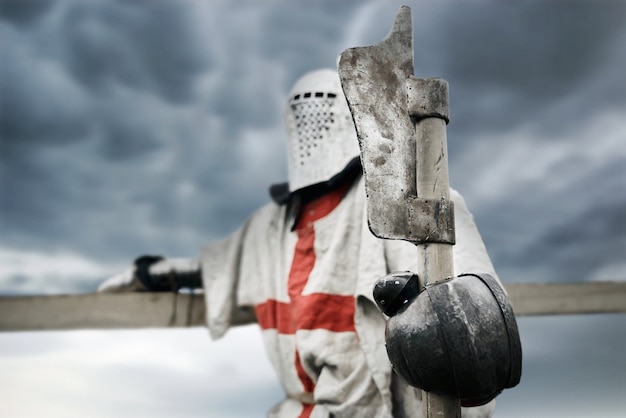Fascinating Facts about the Crusades

The Crusades were a series of military campaigns initiated by the Christian powers of Europe.
The Crusades were fought primarily between the 11th and 13th centuries.
The primary goal of the Crusades was to regain control of Jerusalem and the Holy Land from Muslim rule.
The Crusaders believed that fighting in the Crusades was a way to earn forgiveness for their sins.
The First Crusade, launched in 1095, was the most successful in terms of capturing territories.
The Crusades had a significant impact on the architecture and culture of Europe, as crusaders brought back ideas and goods from the East.
The Crusades led to the establishment of the Latin Kingdom of Jerusalem, which lasted for almost a century.
The Fourth Crusade, instead of reaching Jerusalem, resulted in the sack of Constantinople, causing a major rift between the Catholic and Orthodox Christian churches.
The Crusaders encountered advanced knowledge and technology in areas like medicine, mathematics, and astronomy during their interactions with the Muslims.
Many leaders and knights of noble birth participated in the Crusades, seeking fame and fortune.
The Crusaders used distinctive symbols, such as the red cross, to identify themselves during battles.
Though the Crusades were primarily religious in nature, economic factors and the desire for power also played significant roles.
The Crusades brought about trade between Europe and the Middle East, leading to the exchange of goods and ideas.
Fascinating Facts about the Crusades part 2
The Crusades resulted in the development and spread of new military tactics and technologies, such as siege engines and crossbows.
The Crusades had major political implications in both Europe and the Middle East, reshaping power dynamics and alliances.
The impact of the Crusades can still be seen today in the tensions between different religious and cultural groups in the Middle East.
The Crusaders encountered various cultures and civilizations, including the Byzantine Empire, Seljuk Turks, and Ayyubid Dynasty.
The Crusaders faced many challenges during their campaigns, including harsh climates, diseases, and battles against superior forces.
Several religious orders, such as the Knights Templar and the Knights Hospitaller, were formed during the Crusades to assist the pilgrims and protect the holy sites.
The Crusades contributed to the spread of literacy in Europe as returning crusaders brought back Arabic manuscripts and knowledge.
The Crusades were initially called for by Pope Urban II in response to a plea for help from the Byzantine Emperor Alexios I Komnenos.
Saladin, a prominent Muslim military leader, successfully united various Muslim forces and played a crucial role in the counter-crusades.
The Crusades resulted in large-scale massacres and atrocities committed by both the Christian and Muslim forces.
The Crusades had long-lasting effects on the relationship between Christians, Jews, and Muslims.
The Children’s Crusade, a popular movement in 1212, saw thousands of young people embarking on ill-fated journeys to the Holy Land.
The Crusaders encountered new spices, fabrics, and luxury goods from the East, sparking a desire for trade and exploration.
The Crusades were seen as a way to exert control over key trade routes, such as the Silk Road.
Women played important roles during the Crusades, with some even participating in battles alongside the men.
The Crusades led to the establishment of several crusader states, including the Kingdom of Jerusalem, County of Tripoli, and Principality of Antioch.
The Crusades had a profound impact on literature and storytelling, serving as inspiration for epic tales and legends.
The Crusaders brought back relics from the Holy Land, which were highly valued and believed to possess spiritual powers.
The Crusades were not solely focused on the Middle East, with some campaigns taking place in regions like Spain and the Baltic.
The Crusades fostered both cooperation and conflict between European Christian powers, displaying the complexity of their relationships.
The Crusaders built numerous fortifications and castles in the conquered territories to secure their control.
The Crusaders’ encounters with Eastern Christians, such as the Coptic and Syriac Orthodox, led to greater awareness of different Christian traditions.
Despite their noble intentions, the Crusades led to the suffering and displacement of many innocent civilians.
The Crusaders referred to the Muslims as Saracens and developed a mixture of fear and fascination towards their culture.
The Crusades had an economic impact on Europe, as the need to finance the campaigns led to the creation of new financial systems.
The Crusades resulted in the creation of new orders of knighthood, with members swearing oaths to protect pilgrims and fight against infidels.
The Crusades had a profound impact on the development of Western art, with new artistic styles and themes emerging.
The Crusaders encountered diverse languages and dialects, leading to the development of linguistic studies and translation efforts.
The Crusades inspired the formation of various religious movements and sects, creating new branches of Christianity.
The Crusaders faced numerous logistical challenges, such as ensuring the continuous supply of food, water, and weapons.
The Crusaders often faced internal conflicts and power struggles among their own ranks, hindering their progress in conquering territories.
The legacy of the Crusades continues to be a subject of debate and controversy, with differing interpretations of their impact and motivations.

